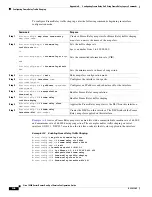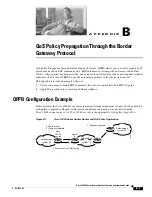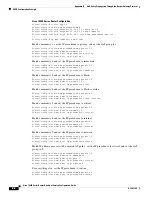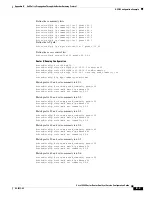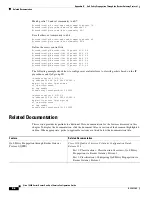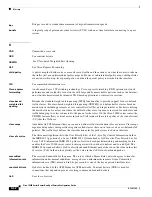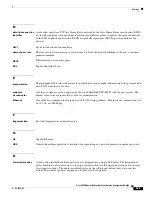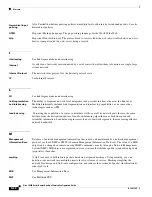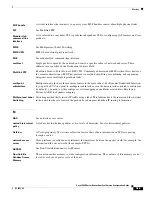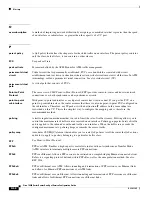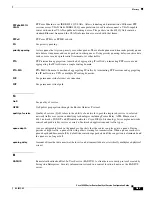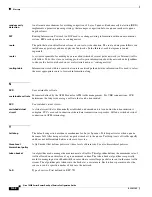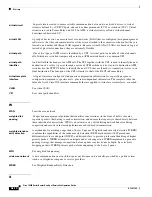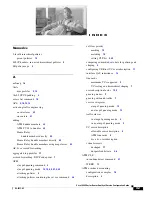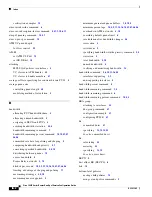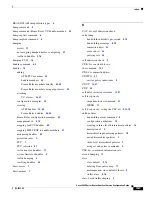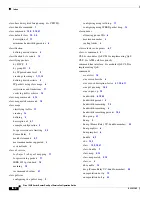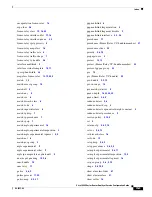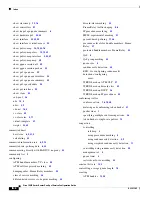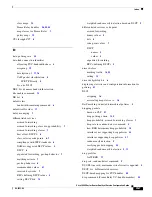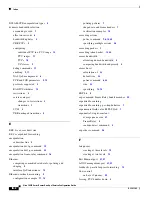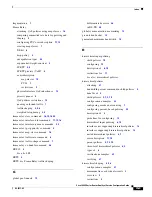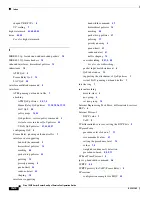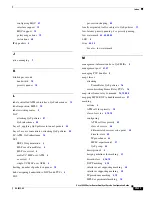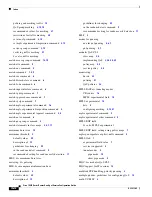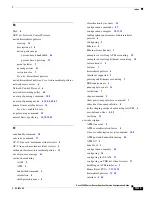
Glossary
GL-10
Cisco 10000 Series Router Quality of Service Configuration Guide
OL-7433-09
virtual circuit
Logical circuit created to ensure reliable communication between two network devices. A virtual
circuit is defined by a VPI/VCI pair, and can be either permanent (PVC) or switched (SVC). Virtual
circuits are used in Frame Relay and X.25. In ATM, a virtual circuit is called a virtual channel.
Sometimes abbreviated VC.
virtual LAN
A group of devices on one or more local area networks (LANs) that are configured (using management
software) so that they can communicate as if they were attached to the same wire, when in fact they are
located on a number of different LAN segments. Because virtual LANs (VLANs) are based on logical
instead of physical connections, they are extremely flexible.
virtual path
One of two types of ATM circuits identified by a VPI. A virtual path is a bundle of virtual channels,
all of which are switched transparently across an ATM network based on a common VPI.
virtual path
identifier
An 8-bit field in the header of an ATM cell. The VPI, together with the VCI, is used to identify the next
destination of a cell as it passes through a series of ATM switches on its way to its destination. ATM
switches use the VPI/VCI fields to identify the next VCL that a cell needs to transmit on its way to its
final destination. The function of the VPI is similar to that of the DLCI in Frame Relay.
virtual template
interface
A logical interface configured with generic configuration information for a specific purpose or
configuration common to specific users, plus router-dependent information. The template takes the
form of a list of Cisco IOS interface commands that are applied to virtual access interfaces, as needed.
VLAN
See virtual LAN.
VPI
See virtual path identifier.
W
WAN
See wide area network.
weighted fair
queuing
Congestion management algorithm that identifies conversations (in the form of traffic streams),
separates packets that belong to each conversation, and ensures that capacity is shared fairly between
these individual conversations. WFQ is an automatic way of stabilizing network behavior during
congestion and results in increased performance and reduced retransmission.
weighted random
early detection
A mechanism for avoiding congestion of Layer 3 queues. Weighted random early detection (WRED)
combines the capabilities of the random early detection (RED) mechanism with IP precedence,
differential services code point (DSCP), and discard-class to provide preferential handling of higher
priority packets. WRED attempts to anticipate and avoid congestion. WRED implements a proactive
queuing strategy that manages congestion before a queue reaches its queue depth. By selectively
dropping packets, WRED prevents packets from enqueuing to the Layer 3 queue.
WFQ
See weighted fair queuing.
wide area network
A data communications network that spans any distance and is usually provided by a public carrier
(such as a telephone company or service provider).
WRED
See Weighted Random Early Detection.
X

